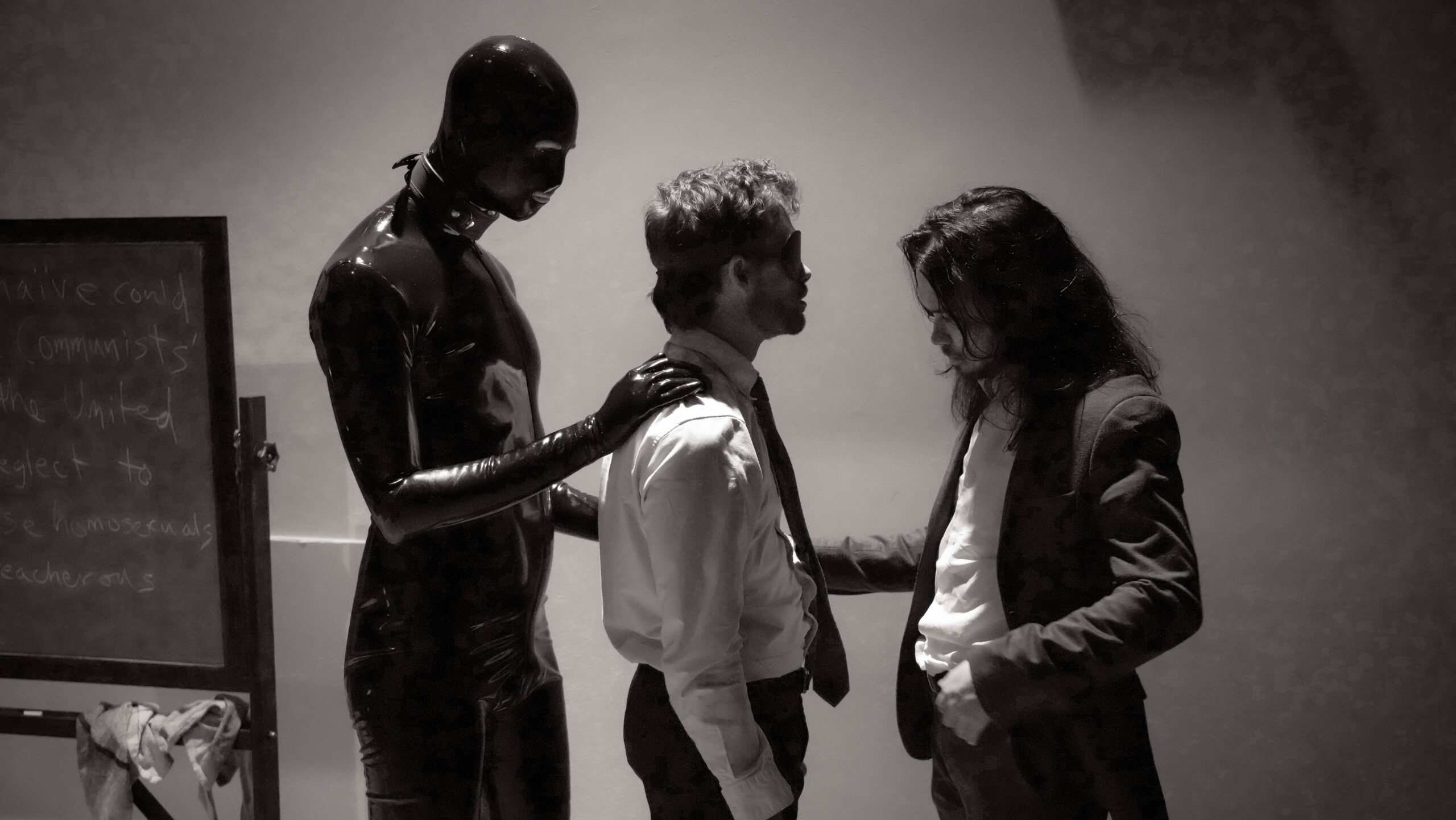
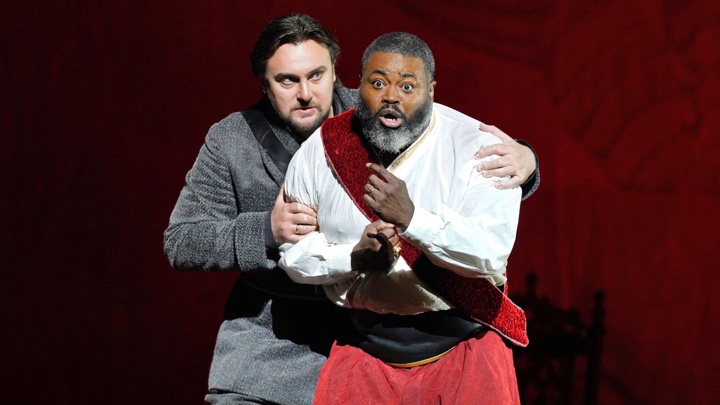
Meanwhile I occupied myself by listening to every recording I could lay hands on, as well as books like Opera on Record edited by Alan Blyth and the collected works of New Yorker music critic Andrew Porter steered me through the rocky shoals of what to like and why and helped me define my own critical thinking.
In spite of the fact that Verdi’s Otello was literally the rock that LA Opera built its house on, due to timing and lack of wherewithal, I didn’t actually see a live performance, in the flesh, until Saturday May 13 at the Dorothy Chandler Pavilion when they revived their 2008 production.
Music Director James Conlon made his way briskly into the pit after the lights dimmed, very briefly acknowledged the tumultuous applause, turned, and suddenly there was cannon-fire. His grasp of the score’s harmonies and architecture was total and I listened as if with new ears all evening long. The playing of the LA Opera Orchestra reached a level of passion and ferocity that surprised even myself. There were times when the orchestra got so hot I was afraid that the singers wouldn’t be heard.
Yet Maestro Conlon kept his players on a very short leash and no one was ever overwhelmed. Still it was the clear delineation of the parts and the transparency of the playing, to say nothing of the constant adjustments to dynamics and balance, that continued to astonish all evening. I’m also happy to report that the horns were on their best behavior (and Verdi gives them ferocious work here).
As to the staging and design things were a little less stellar. John Cox directed this production when it was new and here those duties were handed over to Joel Ivany. He inherited production and costume designs by the late Johan Engels, shared with Opéra de Monte-Carlo and Teatro Regio di Parma, that are challenging. Mr. Engels sets the entire story on a curved surface that rises at over a 20 degree angle stage right and slightly less on the left bookended by two square tunnels and two large whitewashed walls representing a deconstructed Cyprus.
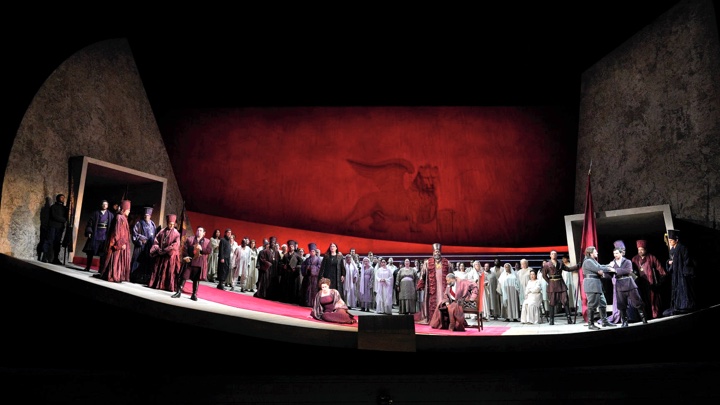
Still Mr. Ivany’s blocking was clear and he worked well in the confines of what he’d been given. Furniture rests askew at most points and there’s no bed for Act IV (!?!) Mr. Engels’ costumes came from no particular period with the Cypriote in vaguely Middle-Eastern robes, Otello’s soldiers in 20th century uniforms, the Venetian Ambassadors in Renaissance regalia and our lady Desdemona modeling the latest fashions from Paris.
Still the play’s the thing and Mr. Ivany was gifted an astonishingly talented cast that brought full musical and dramatic justice to this great work. A more than capable Anthony Ciaramitaro as Cassio and Anthony Leon as Rodrigo brough youth and strong support in these small but pivotal parts
The Rolls Royce casting of Morris Robinson as Lodovico, the Ambassador from Venice, afforded us all the opportunity to enjoy his plush sound and theatrical gravitas. His costume seemed cumbersome due to the weight of its fabric and its cut which was unfortunate as the robes of his fellow council members flowed far freer.
I’m happy to note that our Emilia, Sarah Saturnino, joined the young artists program here last year and she made an enormous impression as a fierce and tender maid to Desdemona. Her stature in the role grew through each successive act and her denouncement of her husband and subsequent devastation at the events of the finale were deeply moving. Her voice is pungent and it’s probably no mistake that I never realized how much Emilia really anchors the great concertato in Act 3 until hearing it live. Her bio proves her to be an extremely accomplished young woman and she is an artist to watch. I hope we hear more from her.
I had the inklings that something wonderful was about to happen when I could actually hear our Jago clearly ringing out over the storm and chorus of the first scene. Igor Golovatenko made a formidable villain and he possesses a sharp, clear, baritone with no discernible register breaks and a nifty trill. One of those magic voices that’s easily audible throughout its entire range.
He debuted at the Metropolitan Opera alongside Lise Davidsen in The Queen of Spades and was asked back to partner Ailyn Perez in Eugene Onegin. He was chilling in the famous “Credo” and never overdid his wickedness. He was also especially adept in the scene with Cassio making certain Otello saw the handkerchief in question. A performance full of vocal assurance and subtle inflections.
But I must confess a lot of my excitement was based on hearing Rachel Willis-Sørensen live as I had enjoyed her recent Sony recital disc and reviewed it on these pages. She was touching in the love duet and did some beautiful and generous phrasing (that was evenly matched, and then some, by her partner Russell Thomas) but I couldn’t help feeling a tad bewildered at my impression of her voice in the theatre.
Then when she made her entrance in Act 3 with “Dio ti giocondi, o sposo” I realized she’d finally gotten her voice lined up and blooming across its entire range. I suddenly thought, “Ah, there she is!” and from that moment forward what had been good was gala. It’s a gorgeous instrument and so full and refulgent on top and her control with the pianissimos in the final scene were magical.
You’d have to do some sort of mathematical equation to figure out what the tessitura for Verdi’s Desdemona is because in spite of the fact it’s written for lyric soprano the role sits uncommonly low, almost in mezzo territory. Apparently Verdi was looking for a rich sound. Ms. Willis-Sørensen gave us her best and dramatically she was touching in her constant confusion over the behavior of her husband. She also did some nifty dominating of the ensemble in Act 3 which is a skill every Verdi soprano should have in her arsenal.
I’ve enjoyed Russell Thomas in all of his roles here at LA Opera. When he debuted his first Otello under Gustavo Dudamel at the Hollywood Bowl in 2018 I must have been out of town. He’s a veteran of a number of productions now and it shows. I remember thinking when I heard him as Mozart’s Tito that he sounded like an Otello and he’d already had one under his belt at that point. He made his first entrance with full vocal assurance and marched to the front of the stage in complete command and delivered a stentorian “Esultate!”
There’s nothing easier than singing a strong mezzo-forte all evening long without nuance or attention to detail. Simply singing the role is hard enough as it is, let alone slapping a little butter on it. Thomas gave an elegant performance all evening long including some astonishing piano phrases in the Act One duet that took me completely by surprise. So beautiful in fact that there was spontaneous applause immediately at its conclusion for he and Willis-Sørensen.
His voice doesn’t ring at the top in a conventional way but every new Otello gets blamed in one way or another for not being the equal of their most recent predecessor in the role. Mr. Thomas’ portrayal needs no such apologies. He was alert to the drama and kept the audience aware of his thought process.
The staging had him flat on his back for “Dio, mi potevi” and his scrupulous musicianship allowed him to pass the famous “A-flat” test without tearing a passion to tatters as it were and overloading Verdi’s simple musical line. He had a candid theatricality that was never embarrassing and he let out with two harrowing death cries during “Niun mi tema”.
The LA Opera Chorus did splendid work under its new Director Jeremy Frank, exciting in the opening storm and towering in the Act 3 concertato. Attention to detail was evident especially when Maestro Conlon took a tiny ritard in the opening at, “Tu, che reggi gli astri e il Fato!” which was just magical.
Lighting by Jason Hand was especially potent in the opening as well with an enormous spherical fire pit swinging in the wind over the chorus. There was much laying on of lightning and thunder effects which I frankly find distracting on recordings but was so well executed it was sensational in the theater. I wish that something could be done about the entrance of the chorus and dignitaries in Act 3 because it’s almost anticlimactic the way it’s lit and staged.
I have to take a moment to speak on the supertitles used. They diminished the text of the opera to such an extent that it caused unintended mirth from the audience in the worst places. The translation of Desdemona’s “a terra, si…” was particularly inane. I’m quibbling because this is a phenomenal cast and musical team and who knows if we’ll ever see their equal again.
As has been the custom with special performances, LA Opera livestreamed this Otello to giant screens on the Santa Monica Pier and Cal State University, Dominguez Hills. I hope they’ll be a commercial release because I may need a new fix by then.
Photos: Cory Weaver / LA Opera
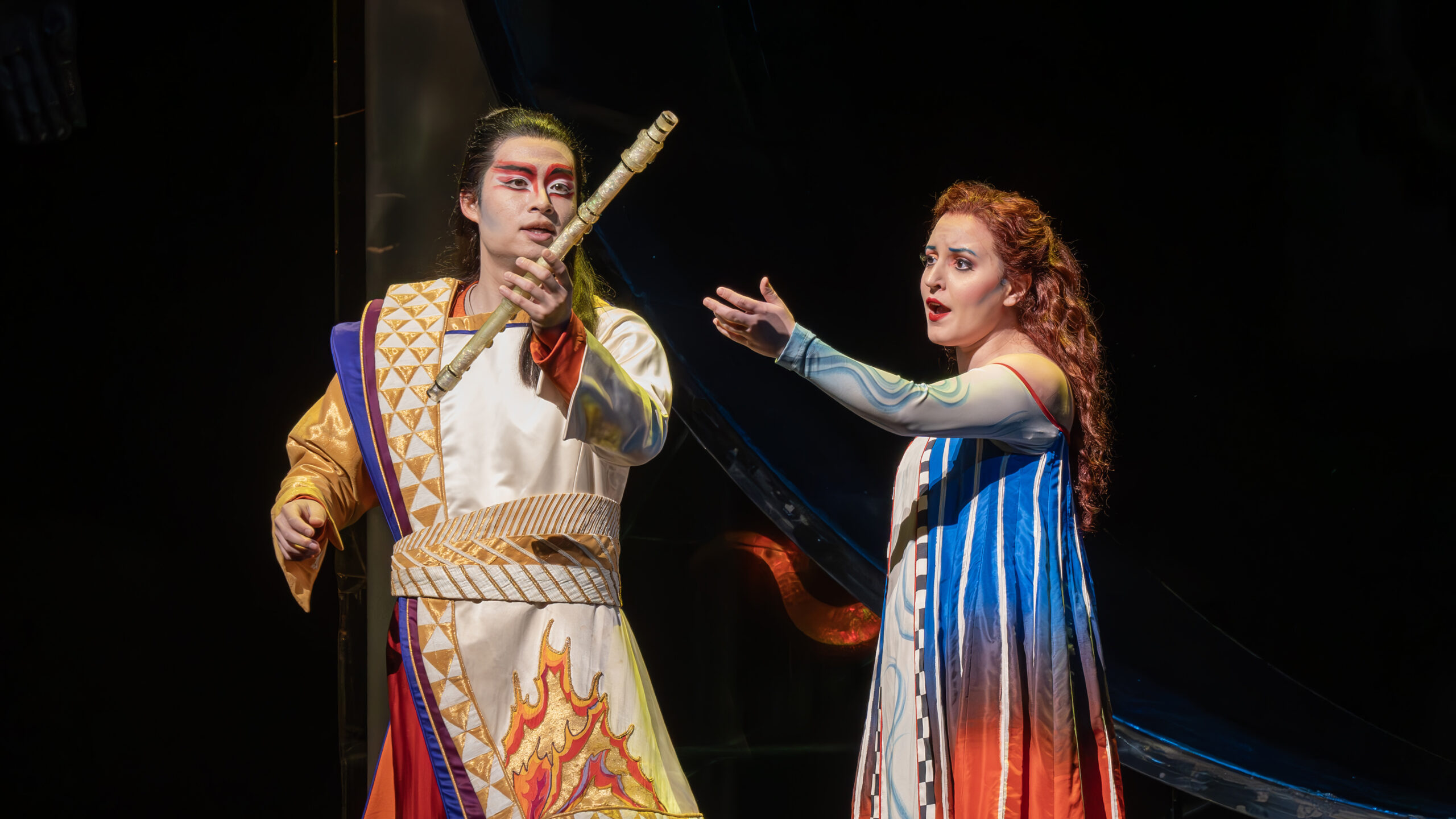
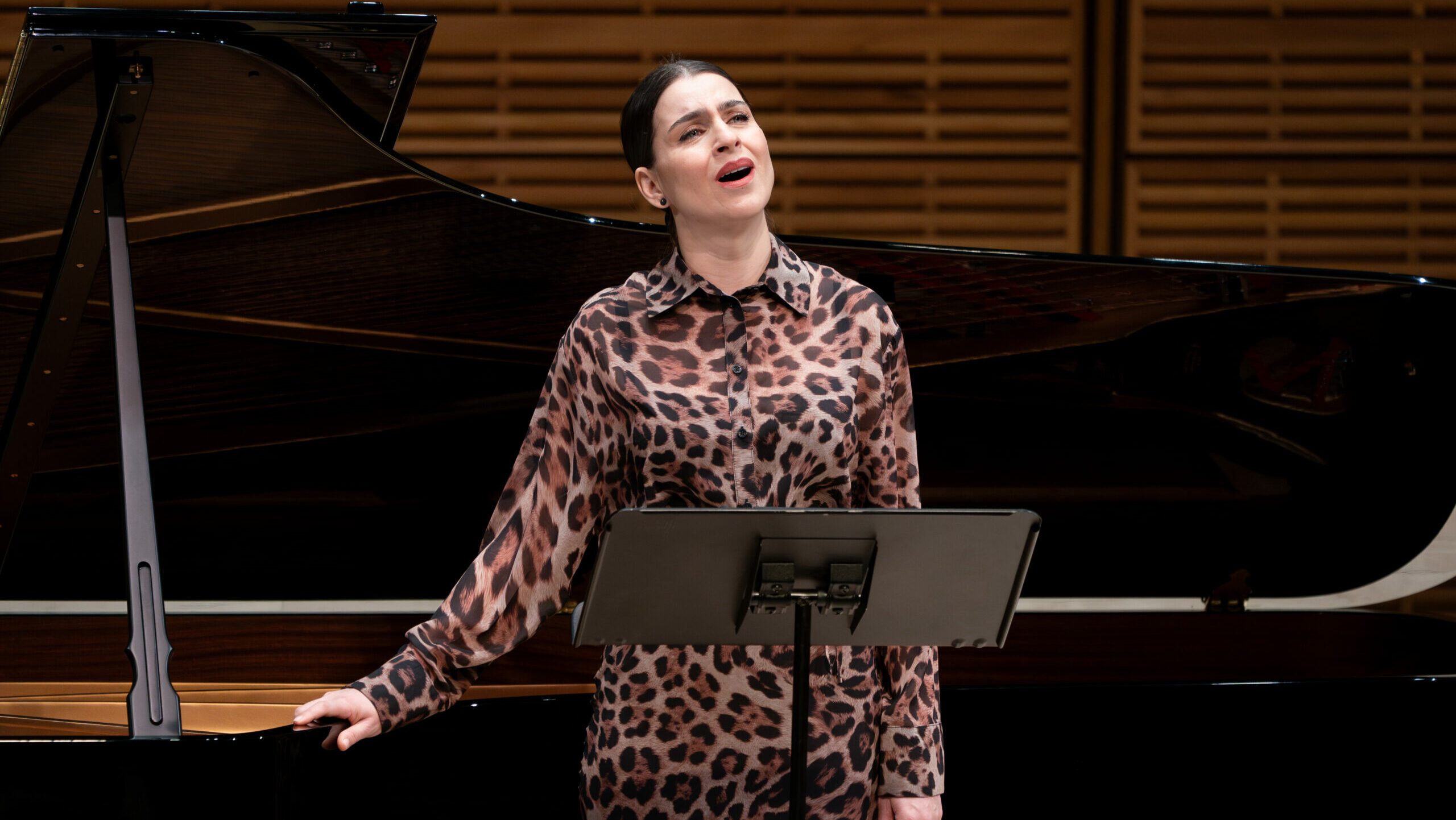












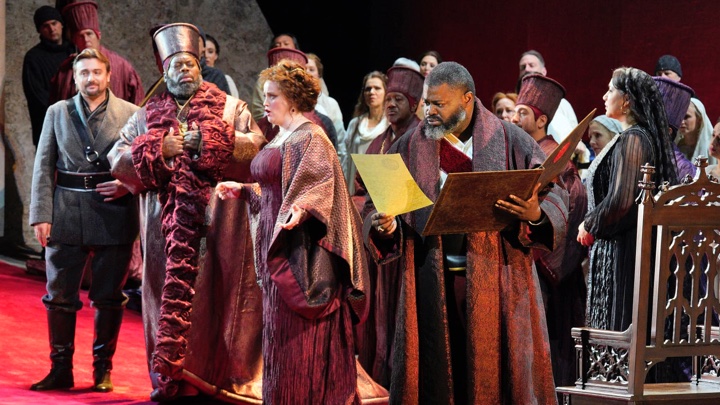


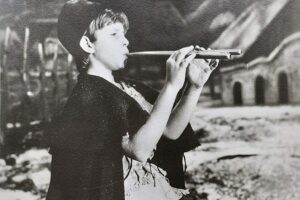
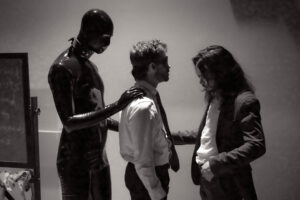



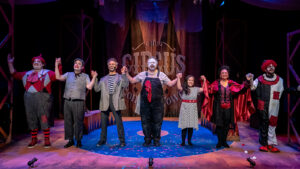
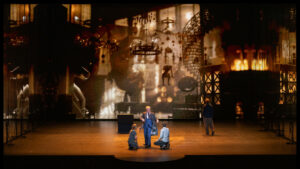



Comments